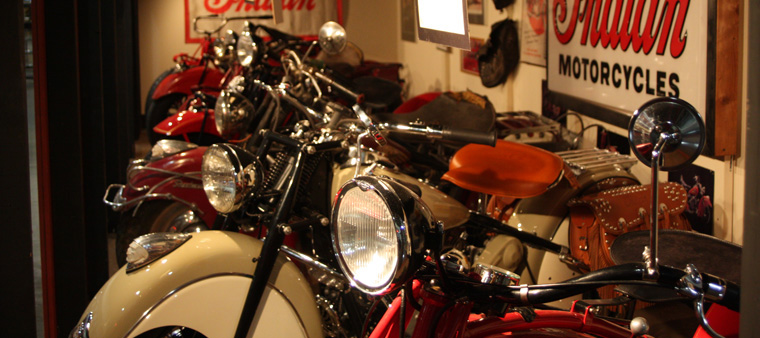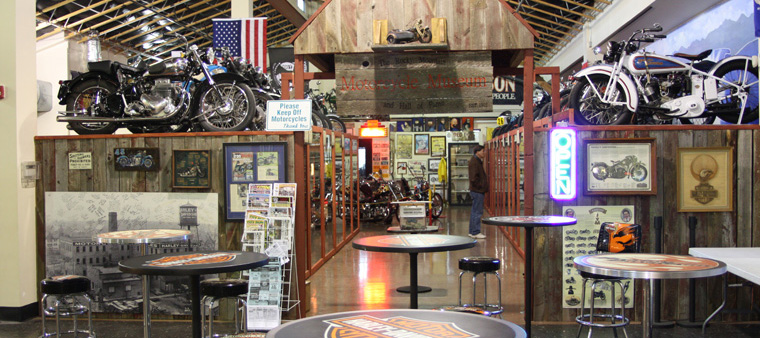A mass motorcycle migration of thousands of riders has descended on Sturgis, South Dakota this month for the world-famous Sturgis Motorcycle Rally, but you don’t have to go that far from the Springs to get in touch with your inner gearhead.
The Rocky Mountain Motorcycle Museum and Hall of Fame houses over 75 original and fully restored vintage and antique motorcycles dating from 1913 to 1983, including Indians, Harley-Davidson, Triumph, and many other brands.
Located in the mezzanine of the Harley-Davidson dealership at 5867 N. Nevada, the admission-free museum opened in 1992 and is run by an all-volunteer staff, including executive director Jim Wear.
“There was no expectation when we started. We wanted to create a place where anybody could come to learn about motorcycling for free,” Wear says.

Wear remembers the late ‘80s and early ‘90s, when shipping containers full of bikes were taken overseas to meet rising demand for American nostalgia. Bikes were stripped for profit and fetched huge prices in places like Japan and Germany, and among private collectors.
“For motorcycle people, that’s our heritage and history,” Wear says. “It’s akin to people going to Egypt and robbing treasures and taking them to Europe.”
Wear says motorcycles are a culture, more than a machine or means of transportation. His story, like many whose lives were spent with motorcycles, spans decades.
In first grade, Wear got an incurable itch for a mini bike, though his mom wasn’t having any of it until a family friend offered a hand-me-down. He then built his first chopper at age 15 — riding it to school at St. Mary’s.
“The nuns were lined up in front of the glass, looking at me with horror,” Wear says. “I was definitely the only kid riding a chopper to school.”
Wear still has that bike, a Triumph. He sold it at one point but his wife tracked it down and bought it back. Since then, Wear has worked on restoring the bike, and much like the museum, preserving its history and the memories it represents.

The Hall of Fame captures the spirit of preservation and storytelling, but rather than well-known household names, the contributions and achievements of everyday people who dedicated their lives to motorcycling are the focus of the museum’s exhibits.
“These are the legends when I was growing up,” Wear says. “We’re talking about some seriously tough people… the people that paved the way for us, they were pioneers. They said ‘let’s go’ and they did.”
The Rocky Mountain Motorcycle Museum and Hall of Fame is a bit of a novelty according to Wear, who notes it’s one of only a few non-profit motorcycle-specific museums. The museum is open Tuesday through Saturday from 9 a.m. to 5 p.m., and Mondays from April through September.
“There’s this sense of something bigger and deeper than themselves that [visitors] can appreciate,” Wear says of the exhibits on the display. “It brings back the youth and glory days for many, and people that understand that will enjoy [the museum].”
Originally written by Jonathan Toman of the Cultural Office and published in the Colorado Springs Independent Abstractions section on August 11, 2017.